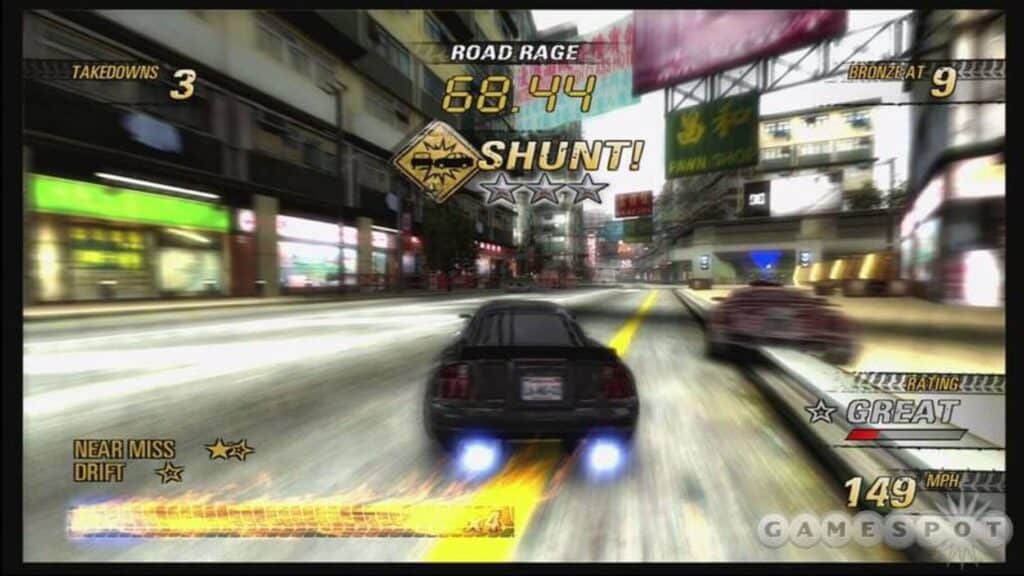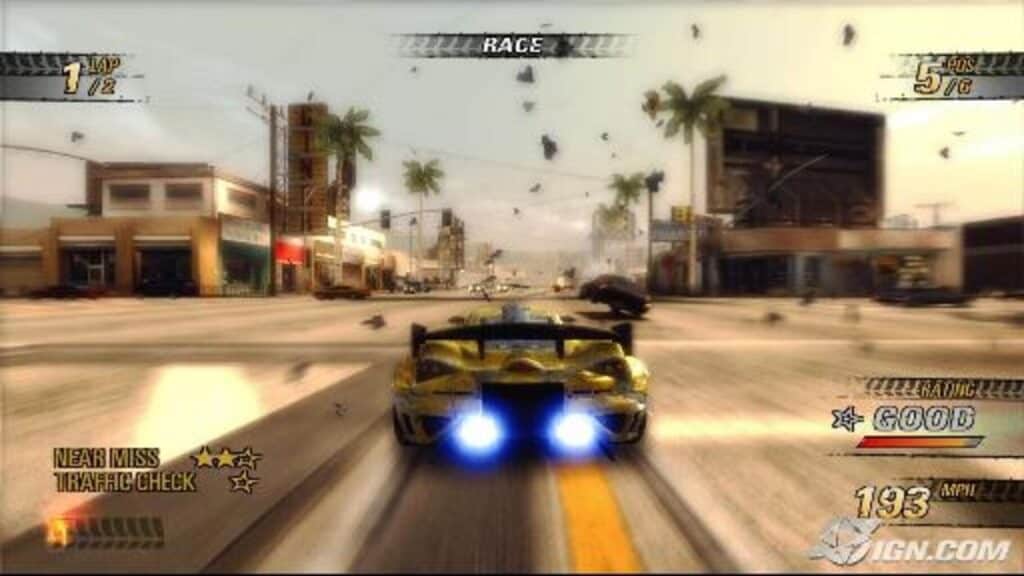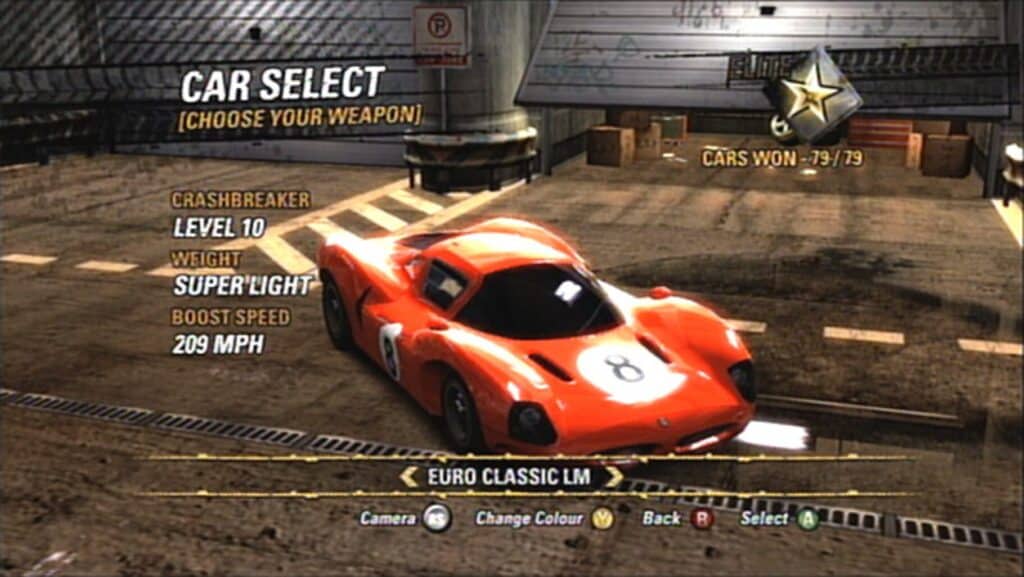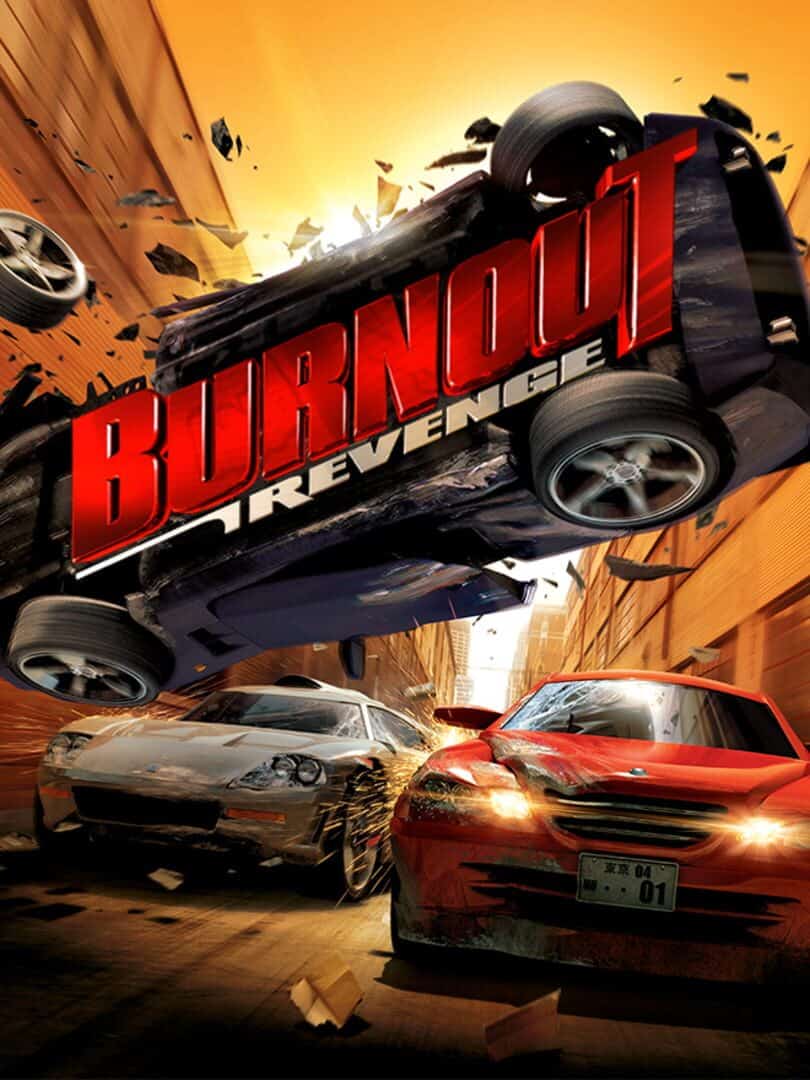Criterion’s next game in the Burnout series continues to surprise and innovate, while at the same time harkens back to the series roots while distancing itself slightly from some aspects of Burnout 3: Takedown. Burnout: Revenge was released in 2005 by Criterion Games for PlayStation 2, Xbox, and Xbox 360. There have been some drastic changes to the franchise that might throw a few players off their game initially. Below are three reasons this game is worth the investment.
Fundamental Differences

The first of these differences is quite a fundamental shift from how you have played the Burnout series up until Burnout: Revenge. In previous games one ill-timed crash could mean the difference between winning and losing. Naturally players would be on the edge of their seat as they flew through city streets, between cement pillars, and around corners while weaving in and out of traffic in an attempt to fill their boost tanks. Revenge takes the sting out of crashing because now, same way traffic is no longer an obstacle; it’s a tactical strategy. The ability to “check” traffic into your opponents is a basic requirement now and one that you need to wrap your mind around.
Various Modes of Gameplay in Burnout: Revenge

As with previous titles you’ll play Burnout: Revenge’s main event to unlock new tracks and with that, new modes of play. New arrivals alongside the tried-and-true Road Rage and Crash challenges include Traffic Attack and the Crash breaker mode. Traffic Attack is exactly what it sounds like – pile on the hurt while Crash breaker is something entirely new. In Takedown, you could steer your car into passing opponents after you crashed using the Aftertouch control. In Revenge, the Crash breaker is actually an explosion you can set off after you crash, as long as you have some Boost left in the caboose.
Using this new technique is cheap; really cheap. You can effectively eliminate almost any who dares take your first-place position. Hell, you can even take out the poor bastards in second and third if they’re close enough when the fireworks go off. This translates into you getting back your first-place position once the gameplay gets underway. Aftertouch was certainly more skill based, less effective and overall, much fairer.
Optimized Designs

In terms of track design Criterion managed to raise the bar over Takedown’s collection. With the foundation of Burnout: Revenge relying heavily on battle rather than avoidance, the track design has been completely overhauled to facilitate and encourage contact. Whereas Takedown’s tracks were fairly narrow and tight, Takedown opens up the arena and allows for far more improvisational takedowns than ever before. Shortcuts also figure prominently in this year’s track design but like anything in life that is too good to be true, there is a caveat. Taking a shortcut often means having to pull off some incredible maneuvers so you won’t lose time or crash.
The crash junctions are much further up the road than before – you might need to pass 2 junctions before you reach the action – and there is a lot of traffic between here and there. Players will have to rely on traffic checking to succeed.
Last Thoughts
Taking the game online is a breeze and like Takedown, extends the replay value of the title immensely. The racing is definitely fast and furious and without lag, hiccups or other graphical anomalies. Revenge is the best looking and sounding in the series and is a contender for the best-looking racer ever. The game moves so fast and looks so incredible at high speeds that other development teams really need to sit up and take notice.
